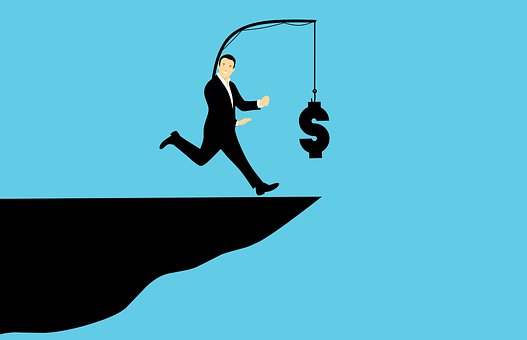What Did We See?
- U.S. Large Cap stocks, or the S&P 500 index, was down more than 8% in February.
- The developed markets of Japan, Europe and the UK were all down from about 8% to 10%.
- Emerging Markets and Asia (Ex-Japan) were down about 3% to 5%
- Global fixed income returns were mixed as high yield faltered while safer bonds rallied.
Where Do We Stand?
- We are experiencing the heightened volatility one would expect as uncertainty due to the coronavirus increases.
- After a sharp decline, valuations have become a bit more reasonable.
- I remain in a position of avoiding overweights to higher risk equities while maintaining an allocation to quality equities.
- I continue to rebalance your accounts accordingly and have been selectively putting cash to work in portfolios.
Markets occasionally will trade on “what if” as opposed to “what is”. When they do it presents opportunities to astute and long-term focused investors. Often, when the market reacts to a perceived threat it does so in larger terms than the actual economic effect of the threat. The uncertainty of the effects of the event at hand is too much for the average human mind to handle and markets and participants panic. Successful investors will have the wherewithal to take advantage by rebalancing or putting idle cash to work during events like this. The important thing in these times of volatility is to not go running blindly off a cliff chasing a little extra return while still taking advantage of the dislocation in prices.
As February began, most investors were cautiously observing the coronavirus in China. While there were isolated outbreaks around the globe, they remained isolated. For much of the month, the virus remained contained in China. The misguided belief that somehow this virus would not travel in our interconnected world kept markets at all time highs. How misguided it was!
That changed dramatically when news surfaced that the coronavirus spread to northern Italy, South Korea and Iran. When the virus was localized in China everyone feared that shuttered factories there would disrupt the global supply chain. U.S. companies use many parts that are made in China and this sudden halting of production would wreak havoc on production and economies around the world. This is called a “supply shock” and can be bad for the global economy, but not insurmountable.
What’s behind the deeper market sell-off?
Anxieties that coronavirus will damage the U.S. and global economy via a supply shock are responsible for the original hit to global equities. In fact, supply chains are already disrupted and corporate earnings will feel the effect for some quarters to come. However, a supply shock can be mitigated in a few quarters as factories come back online and production resumes. In today’s highly efficient world that can probably happen pretty quickly and the damage from the slowdown relatively mitigated.
A much more concerning issue would be if the virus causes an extended “demand shock”. Disruptions to our normal routines around the globe could pressure the demand for goods and services. This in turn could delay the expected acceleration in corporate earnings this year. This is what is driving the majority of the downturn in equities. If you remember, last year saw markets hit all time highs with little to no growth in corporate earnings. This year the market was going to need to see some acceleration in profits if it were to sustain it’s lofty heights. That all comes into question now and is something to monitor closely.
Some perspective and past epidemics
Let’s keep this outbreak in perspective. New cases appear to have slowed in China, according to Worldometer, which combines data from global health organizations. The damage that has been done in the stock market has been swift due to the heightened uncertainty this virus presents. The projections for the global economy have shifted to the downside and no one really knows how much downside that represents. Thus, the market has shot first and will ask questions later.
To keep things in perspective, the “regular“ flu has infected about 40 Million people in the U.S. this season as per the CDC. This has caused a tragic 18,000 – 46,000 estimated deaths but is not a blip in most of our economic or daily lifestyle. By comparison, as of March 1, 88 people in the U.S. have contracted the coronavirus as per the Wall Street Journal. Granted, this virus is much more contagious and deadlier, but we have been here before and it turned out OK for the vast majority of us.
Are investors and the public overreacting?
We’ve lived through the measles, polio, SARS, MERS, H1N1, and the flu, which hits us every year. While we still don’t have a full understanding (or vaccine), our work is progressing. There is already a drug that will combat this virus moving toward clinical trials. It took three months for us to get there in 2020. By comparison, in 2002, the responsive drug to SARS took 20 months to get to that point. Amazing!
During H1N1 in 2009 we had about 61 million cases and about 12,500 deaths in the U.S. alone. The media then was too focused on the Great Recession to stoke the fear we see today. Today, the media (in their ever-persistent goal of getting clicks and eyeballs) is pelting us with non-stop coverage of this virus. Stay diligent in your efforts to avoid all viruses but please don’t fall for the fear-mongering. Wash your hands!
As we enter March the U.S. economy remains on solid footing and our banking system is in a much better position than it was in 2008. The Federal Reserve is poised to act, if necessary, as per comments from Fed Chair Jerome Powell. The U.S. consumer is on solid footing as well and can remain a key driver of the economy through the rest of 2020. Volatility in markets is inevitable and has certainly been heightened as of late. It likely feels different this time because markets have been so complacent the past few years.
Ready, Fire, Aim!
There will be a time when markets come out the other side and economic forces will recover. By then it will be too late to have acted. Through the end of the month we saw about a 13% pullback in the S&P 500 from all time highs. Was that enough? I would be remiss to claim to know. As many of you are aware, I have been leaning to the conservative side of investing our client’s assets. Cash levels have been maintained at higher than normal target levels for some time. This prudence now affords me the opportunity to “nibble” at investments that previously were trading at richer valuations than I was comfortable with. As Warren Buffet so eloquently put it “attempt to be fearful when others are greedy and to be greedy only when others are fearful.”
So, we have taken the opportunity to rebalance portfolios and put some of the cash we have on hand to work. In 1, 3, 5, 7 or 10 years it will look like a good move, regardless if the market goes down another 5% or more. While the fear due to Coronavirus is not anywhere near a panic, equity levels have breached a “correction”. With the longer term trend of the market still positive and economic health likely impacted only marginally at this point, I would view this as more of an opportunity than a warning to run for the hills. Maybe I am wrong but it just doesn’t feel like a turning point in the markets, yet.
Disregard Uncertainty
I recognize that the uncertainty around this virus as it related to the markets is unsettling. More importantly, the uncertainty around this virus as it relates to our health is unsettling as well. Turn off the news, get outside if you can. Do what brings you peace. This virus will pass and the uncertainty around it will as well. I hope I can bring some solace in your knowing that your investments are being monitored and your wealth is being stewarded by capable hands.
If you have any questions or have experienced any changes in your financial situation please do not hesitate to Contact Me.
We appreciate your being a part of the Shorepine Wealth Management family.
Investment Products are Not FDIC Insured. No Bank Guarantee. May Lose Value. Investing involves risk. All written content on this website is for information purposes only. Opinions expressed herein are solely those of Shorepine Wealth Management, unless otherwise specifically cited. This is neither a solicitation of offers to buy securities nor an offer to sell securities. Past performance is no guarantee of future results. Material shown here is believed to be from reliable sources however, no representations are made by our firm as to another parties’ accuracy or completeness. All information or ideas provided should be discussed in detail with an advisor, accountant or legal counsel prior to implementation. Shorepine Wealth Management, LLC is a registered investment adviser offering advisory services in the State of California and in other jurisdictions where registered or exempted.




